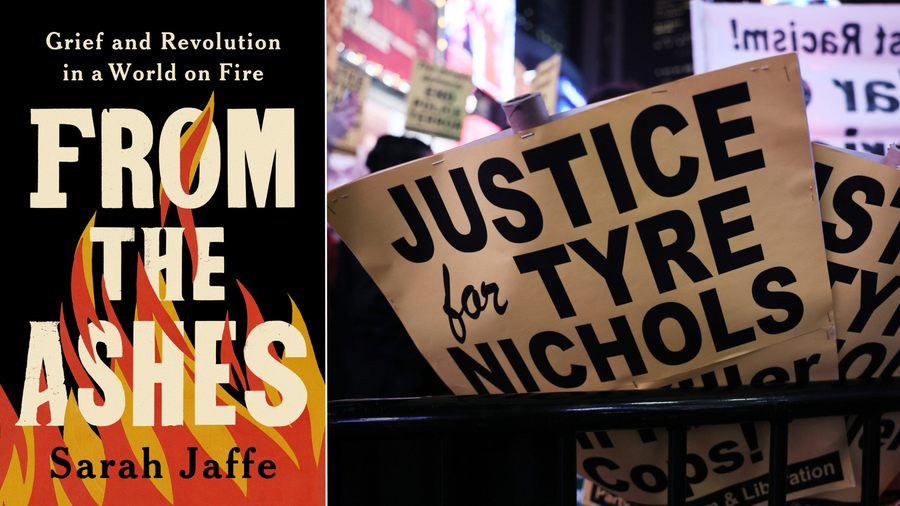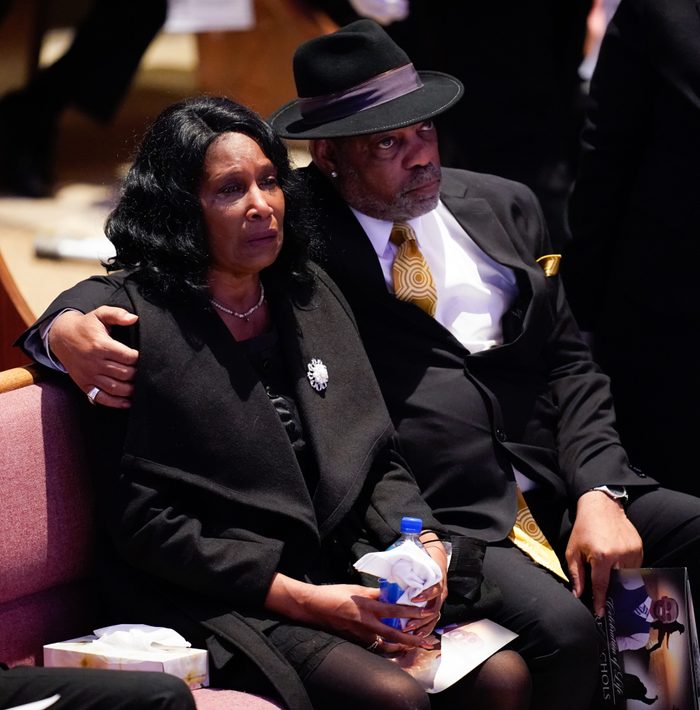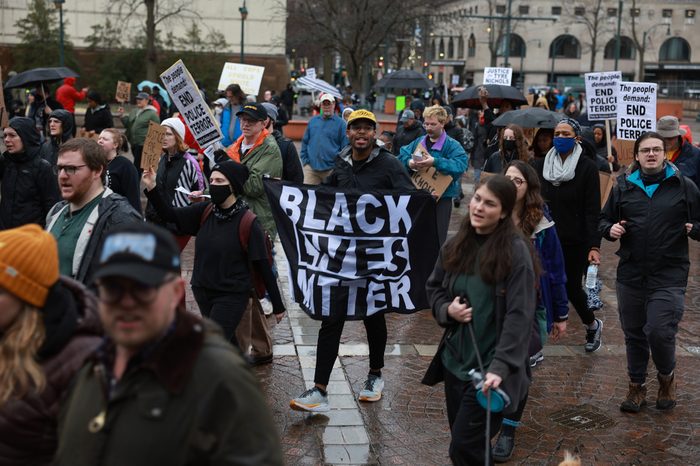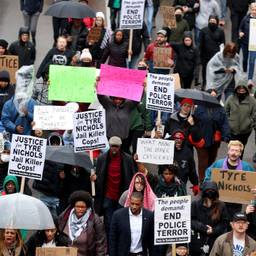"Grief Is a Rupture": Sarah Jaffe's New Book on Grief and Revolution in a World on Fire
In her new book “From the Ashes” In These Times columnist Sarah Jaffe examines the intersections between grief and organizing for a better world.
Sarah Jaffe

For those in Chicago, we encourage you to attend Sarah Jaffe’s discussion about her book with Dania Rajendra on Tuesday, September 10 at 6:30 p.m. CT. You can register for it here.
In the following excerpt from From the Ashes: Grief and Revolution in A World on Fire, Jaffe looks specifically at issues of grief and struggle in Memphis, Tennessee. Jaffe, who lives in the South and frequently covers issues of justice and labor there, wrote a powerful article in May about Memphis and Tyre Nichols that carried the headline “Tennessee’s Governor Subverted Police Reforms After the Killing of Tyre Nichols.”
In that article, Jaffe wrote:
“Local organizers claimed victory when the city of Memphis passed several ordinances that would restrict police, including one called the ‘Driving Equality Act in Honor of Tyre Nichols,’ which banned stopping drivers for minor infractions like a brake light out or recently expired registration.
And it is this ordinance that the state of Tennessee recently overruled.”
Jaffe went on to explain that the Tennessee governor’s actions are “part of a growing pattern of state governments moving to curtail any sort of reform that might improve the lives of Black, brown and working-class people at the city level.”
The excerpt from From the Ashes: Grief and Revolution in A World on Fire follows below.
Grief is a rupture. It makes unthinkable the future that you thought you would have. Rebellion is a rupture too, one where a collection of people come together to say, to demand, to insist that the past future is no longer one they will accept.
In Memphis there is a house that used to be a stop on the Underground Railroad. They call it Slave Haven now; it is a museum you can visit. Alice Pettit and Beth Hoffberg took me there, and my eye landed on a reproduction of a poster for a raffle that had as its prizes “Dark bay horse, ‘Star’ and Mulatto girl, ‘Sarah.’” My name. A prize like a horse to be won. We walked down stairs into a low-ceilinged basement where once enslaved people had breathed quietly, hiding, resting between stops on their journey north. We peered out between loosened bricks to see a tiny bit of light.
I was there to talk to Hoffberg about today’s horrors, not the horrors of
the past, though they would echo in our conversation. She hadn’t wanted
to watch the video of the police beating Tyre Nichols, but her partner at
the time was a journalist and he was Black and his job demanded that he
watch them and she wanted to hold him through it, so she made a space
in her apartment where they would not normally sit — “this can sit here,
and you don’t ever have to be in this exact space again like this,” she told
me — and they watched the videos while outside the protesters took the
I-55 bridge.

The videos by 2023 had a horrible sort of routine to them, released like a movie premiere with promotions and a showtime. The videos haunt- ing, the death happening over and over again. “The City of Memphis has made an exhibition of the footage,” Doreen St. Felix wrote in the New Yorker. The releases “carefully choreographed,” allowing public officials to claim the side of justice even as they prepare to crack down on protests.
Hoffberg spent the night looking at Nichols’s photography website, his Facebook page; she read his posts and his stories and realized how many of his photos had been taken at the park where she walked her dog every day, realized afresh how awful what she had just seen was. “If someone in my family had experienced this, I wouldn’t want strangers to just … watch this video,” she said. “People should have access to see it in terms of holding the police accountable. But we shouldn’t be able to witness other people being murdered.” The horror of the moment drove her to join the protests and to try to honor the man she tried to know from the art and skateboarding and writing he had done while he was alive, the things that gave him joy and made him specifically irreplaceable.
If we linger on the expression of suffering, the results of violence, the
images of the bereaved mothers sisters daughters cousins partners, it may
be that we will only be able to imagine more suffering, that the images
will simply produce fear, despair, complacency. Yet the photographs too
have the power to reach beyond their immediate context, to touch and
shock. Mamie Till Mobley, whose son Emmett was murdered far from
home for paying attention of some sort to a white woman, insisted on an
open casket at the funeral, showing what white people had done to her
child, showing, as Joy James said, that “there’s nothing holy except for
your love and rage.” Mobley’s love and rage went around the world.

Beth Hoffberg wanted the world to know Tyre Nichols through the photos he had taken, not the video of his death. She walked me down to Fourth Bluff Park to show me where they set up the enlarged prints of his best work ninety days after his death to remind the city that a person had been killed, a person who deserved to be remembered and mourned. The park is gorgeous, overlooking the Mississippi River, which I followed from New Orleans to Minneapolis and back. It used to be called Confederate Park, and I can’t forget that any more than I can forget why I am in Memphis.
The three-month anniversary of Tyre Nichols’s death was also Easter Sunday, and so Hoffberg and L. J. Abraham and Amber Sherman planned a weekend to celebrate his life and to build up to a pivotal City Council meeting where they were demanding changes to the law that might have prevented his death. They wanted to show him as a complex person, not to prove that he was respectable enough to be honored, but because when he died a whole universe died. Because he had, on his website, invited people to see the world through his eyes: “My vision is to bring my viewers deep into what i am seeing through my eye and out through my lens. People have a story to tell why not capture it instead of doing the ‘norm’ and writing it down or speaking it. I hope to one day let people see what i see and to hopefully admire my work based on the quality and ideals of my work. So on that note enjoy my page and let me know what you think.”

Hoffberg reached out to Nichols’s family through their attorneys to ensure they would approve of her printing his photos and setting up the event, and then she and Abraham and Sherman invited people to speak at sunset and to release lanterns above the Mississippi and honor different parts of who Tyre was. His parents and grandmother and aunt passed through the space quietly at different times. There was a prayer, and a letter from Tyre’s friend in California, and an affirmation Tyre had written, and Hoffberg played sound bowls, and they released 29 lanterns, one for each year of his life. On his website Nichols had asked people to let him know what they thought of his photos, so at the event the organizers handed out cards, and people wrote down and shared their thoughts. And then they asked people to attend the City Council meeting for a different form of action and grief.
Decarcerate Memphis had decided to focus on pretextual traffic stops before Tyre Nichols was killed, inspired by what had happened to Darrius Stewart and too many others around the country. They delved deep into what little information was available in Memphis about traffic stops and who was stopped and where and how often they were arrested or hurt or killed. They also held brake light clinics, fixing lights on people’s cars for free to take away one more reason for police to stop Black drivers. The goal of abolitionist organizations like Decarcerate is not police “reform” but rather to chip away at police power and reduce the amount of interactions the police have with people while creating alternative institutions — like the brake light clinic — that solve problems.
In November Decarcerate put out its report Driving While BIPOC analyzing all the data on traffic stops and making policy suggestions. They presented the report to the council in December; the council, Decarcerate member Adam Nelson said, made sympathetic noises, but the organizers all assumed they would spend a year just asking for data transparency. The uprising after Tyre Nichols was killed changed everything. Nelson and the others joined the street protests, supported the family’s demands — to charge the officers who killed him, to name all the public personnel who were on the scene when he was beaten and release their files, and to end the SCORPION unit (Street Crimes Operation to Restore Peace in Our Neighborhoods, a mouthful of a name that seems to imply many things at once). They also added their own demands, prewritten ordinances for data transparency and to ban pretextual stops as well as the use of unmarked cars and plainclothes officers in traffic enforcement.
The bills passed their first vote on February 7, but the Memphis process demands three votes to pass something into law, and so across Memphis the organizers had to keep up the energy; they had to fight to keep
the bills on the agenda, to keep them from being watered down, and ultimately even to stop a bill that had Tyre Nichols’s name on it but nothing
that his family or the community had demanded. Eventually, the pretextual stops ban was passed, bringing the total of reform ordinances to six.
After the win comes the letdown or the reconciliation or both. It is the feeling, as Nyliayh Stewart said, that you are proud of the win but still angry at what it took, the months and years of painful work and the deaths and putting your grief on display to the world. There’s frustration that the laws passed are imperfect. There’s the real tension and splits within a community held together by momentum that come up when the momentum fades. Communities are formed in the struggle, Nelson noted, but those communities change and sometimes fall apart.
I think of the common chant “If there ain’t no justice then there ain’t no peace.” It is a political demand of course, that the streets will not be quiet and the fire will not go out until there is justice, but it is also a statement of what grief feels like when the loss is a violence. How do you rest and feel at ease without justice — except what even would justice be? A little piece of justice can still bring you no peace.
Sarah Jaffe is a writer and reporter living in New Orleans and on the road. She is the author of Work Won’t Love You Back: How Devotion To Our Jobs Keeps Us Exploited, Exhausted, and Alone; Necessary Trouble: Americans in Revolt, and her latest book is From the Ashes: Grief and Revolution in a World on Fire, all from Bold Type Books. Her journalism covers the politics of power, from the workplace to the streets, and her writing has been published in The Nation, The Washington Post, The Guardian, The New Republic, the New York Review of Books, and many other outlets. She is a columnist at The Progressive and In These Times. She also co-hosts the Belabored podcast, with Michelle Chen, covering today’s labor movement, and Heart Reacts, with Craig Gent, an advice podcast for the collapse of late capitalism. Sarah has been a waitress, a bicycle mechanic, and a social media consultant, cleaned up trash and scooped ice cream and explained Soviet communism to middle schoolers. Journalism pays better than some of these. You can follow her on Twitter @sarahljaffe.






